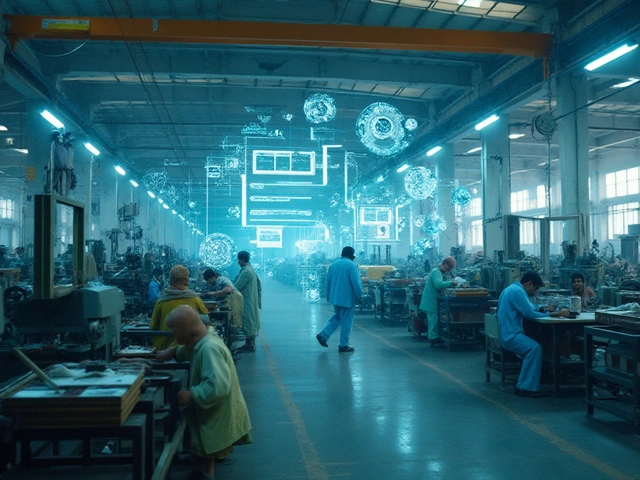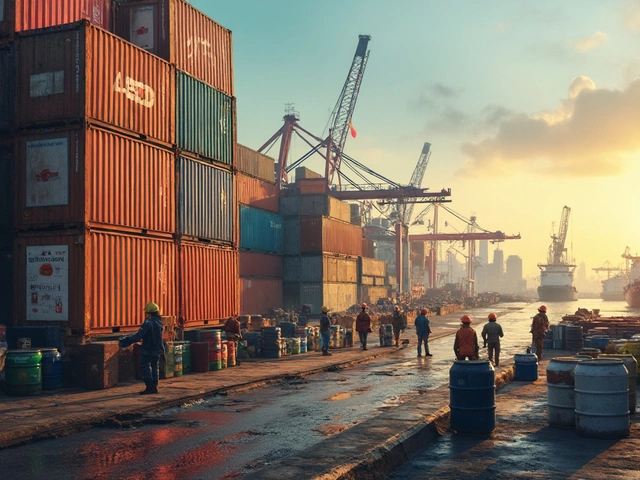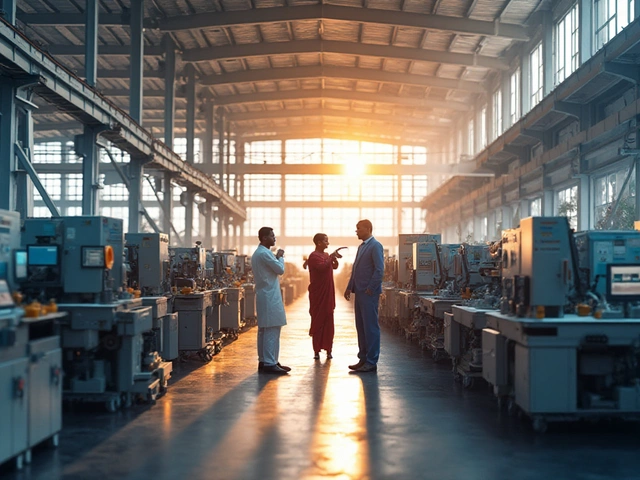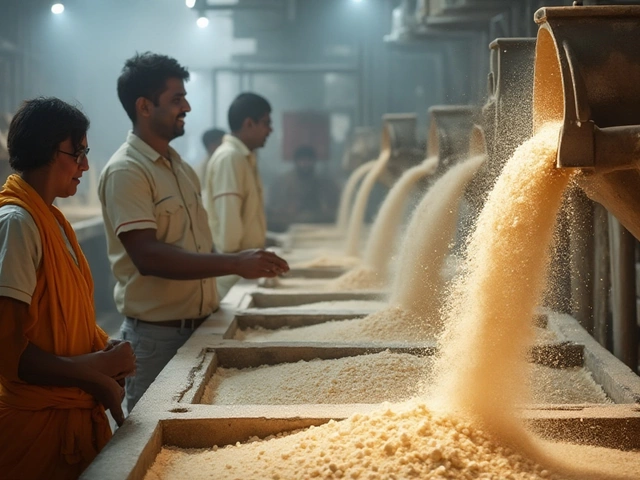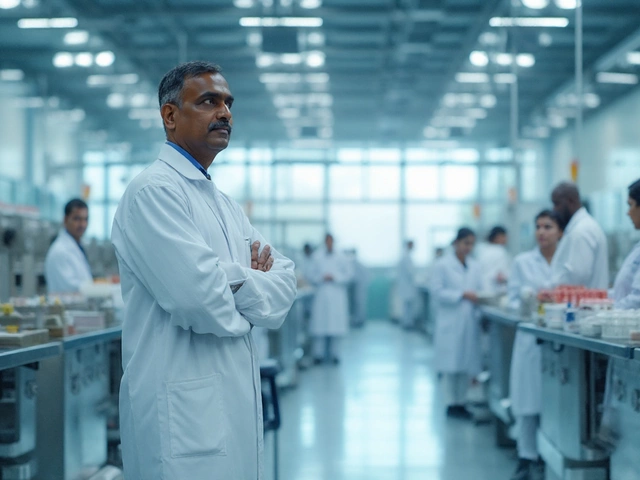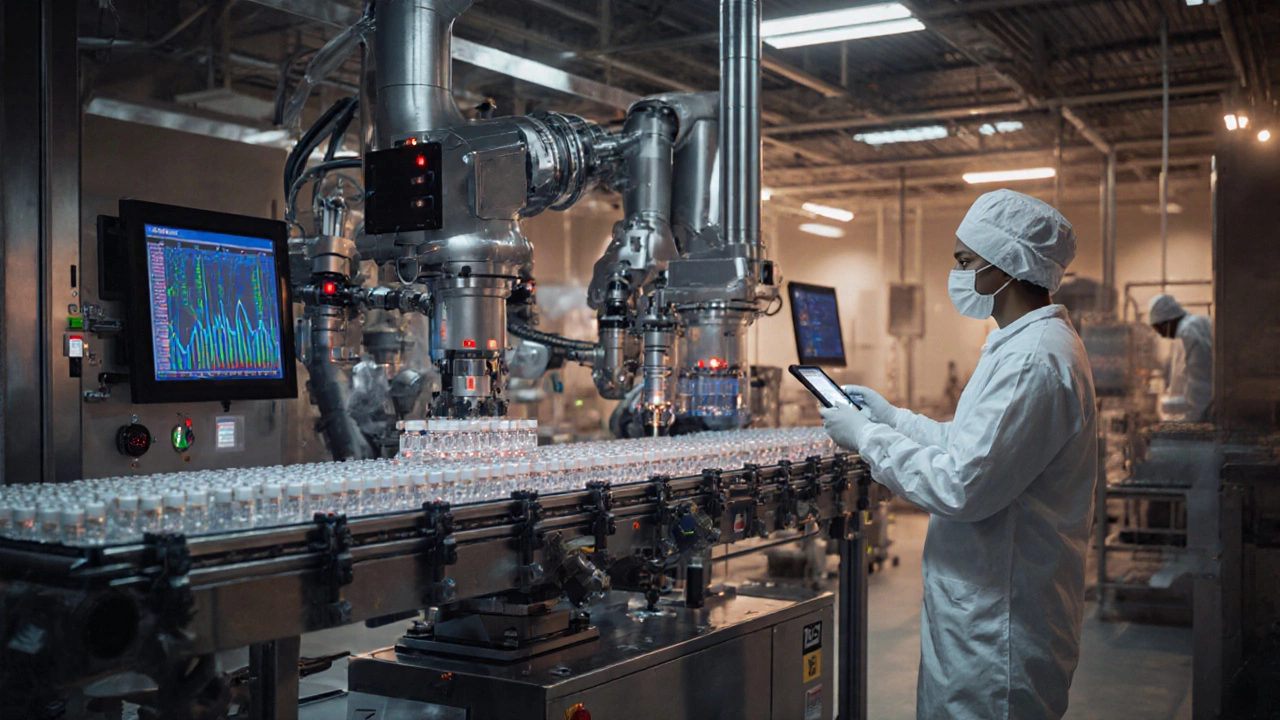
India API Self-Sufficiency Calculator
India aims to produce 80% of its own Active Pharmaceutical Ingredients (APIs) by 2027. Currently, 52% of APIs are imported. This tool estimates how quickly India can achieve self-sufficiency based on annual growth rate.
Enter values to see results...
India is already the world’s largest supplier of generic medicines by volume. But what comes next? The future of pharmacy in India isn’t just about making more pills-it’s about smarter factories, stronger regulations, AI-driven R&D, and becoming a global leader in high-value drugs, not just low-cost copies. Right now, Indian pharma companies produce over 20% of the world’s generic medicines. That’s not luck. It’s a system built on low labor costs, skilled chemists, and decades of experience. But that model is changing fast. The next decade will decide whether India stays on top-or gets left behind.
From Generics to Innovation: The Shift in Drug Production
For years, Indian pharma thrived by copying off-patent drugs and selling them at a fraction of the price. Companies like Sun Pharma, Dr. Reddy’s, and Cipla became household names in the U.S. and Europe because they could make a $100 cancer drug for $5. But that’s no longer enough. Patents are expiring faster, and countries like the U.S. and EU are cracking down on price gouging and quality issues. The government’s Pharmaceutical Production Linked Incentive (PLI) scheme, launched in 2020, is pushing companies to move up the value chain. The goal? Produce active pharmaceutical ingredients (APIs) and complex formulations inside India instead of importing them from China.
Before 2020, India imported over 70% of its APIs. Today, that number is down to 52%. The PLI scheme has already funded over ₹15,000 crore ($1.8 billion) in incentives. Companies are building new API plants in Gujarat, Telangana, and Maharashtra. By 2027, India aims to produce 80% of its own APIs. That’s not just self-reliance-it’s a strategic pivot. The future belongs to companies that can make complex drugs: biologics, mRNA vaccines, oncology drugs, and inhalers-not just tablets.
Regulation Is Getting Tougher-And That’s Good
Remember the FDA warnings? Between 2015 and 2022, over 30 Indian drug plants were banned from exporting to the U.S. because of data manipulation, poor sanitation, or fake records. Those were dark days. But they forced change. The Central Drugs Standard Control Organization (CDSCO) is now hiring more inspectors, using AI to analyze inspection reports, and partnering with the FDA for joint audits. In 2024, India had the lowest number of FDA warning letters in a decade.
Companies that survived the crackdown are now investing in digital quality systems. One major manufacturer in Hyderabad replaced paper logs with blockchain-based batch records. Every step-from raw material receipt to final packaging-is timestamped and encrypted. That’s not just compliance. It’s trust. And trust is what opens doors to markets like Japan, Australia, and the EU. The future of Indian pharmacy isn’t about cutting corners. It’s about proving you can be the most reliable supplier in the world.
Technology Is Reshaping How Drugs Are Made
Factories in India are no longer just rows of machines and workers in caps. Smart manufacturing is here. AI predicts batch failures before they happen. Robotics handle sterile filling for injectables. Digital twins simulate production lines to cut waste by 15-20%. In 2025, over 40 Indian pharma plants have adopted Industry 4.0 tech. One company in Pune cut its production cycle for antibiotics from 14 days to 6 by using real-time data analytics.
Even small players are catching up. A startup in Bengaluru built a low-cost, modular bioreactor that can produce monoclonal antibodies for under $10 per gram-compared to $100+ in the U.S. That’s game-changing. India’s advantage isn’t just cost anymore. It’s agility. Startups can test new tech faster than big Western firms tied to legacy systems. The future belongs to those who use tech to make better drugs, faster, and cheaper.
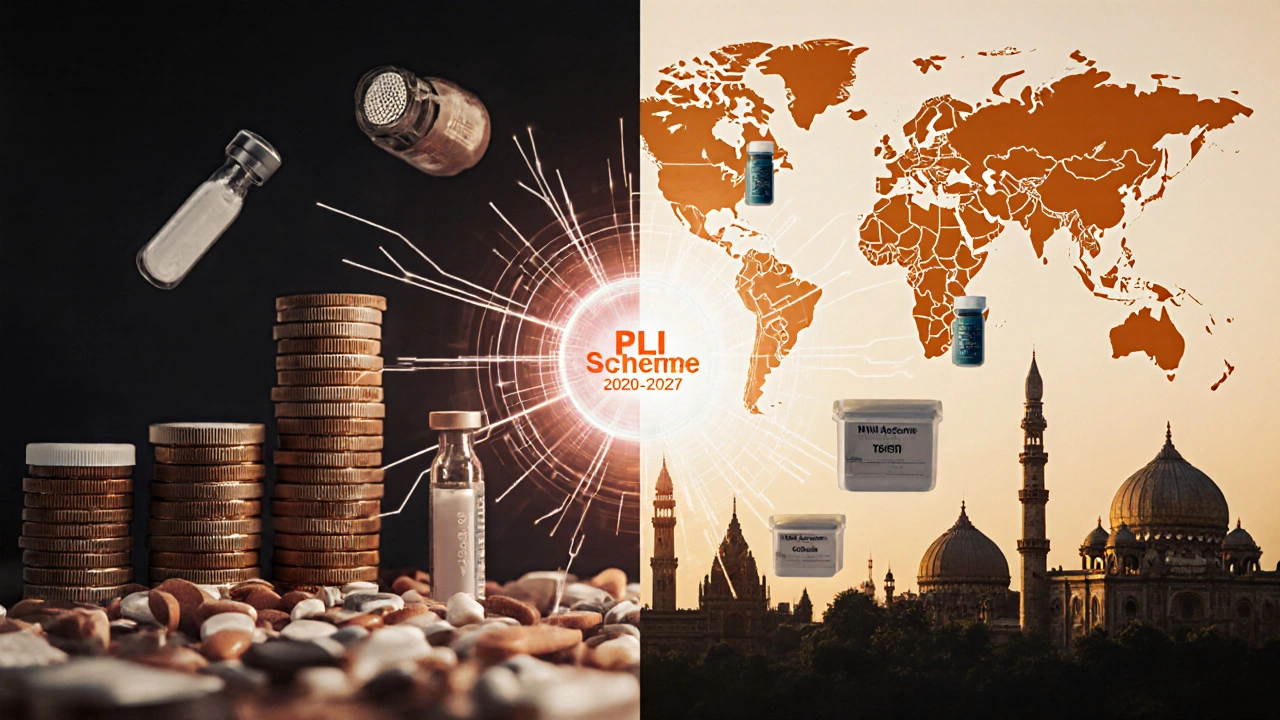
Global Demand Is Shifting-India Must Keep Up
India’s biggest customers aren’t just the U.S. anymore. Africa, Southeast Asia, and Latin America are buying more. Why? Because they need affordable, reliable medicines. But those markets don’t just want generics. They want vaccines, diagnostics, and chronic disease treatments. India exported over $25 billion in pharma products in 2024. Of that, $8 billion went to Africa alone.
But here’s the catch: countries like Nigeria and Indonesia now want local production. They’re not just importing-they’re demanding joint ventures. India’s pharma giants are responding. Sun Pharma has a plant in Nigeria. Biocon has partnerships in Brazil. The future isn’t just exporting bottles. It’s exporting knowledge, tech, and manufacturing capability. Companies that build local supply chains abroad will dominate the next decade.
The Talent Gap Is Real-And It’s Getting Worse
India has millions of pharmacy graduates. But how many can run a GMP-compliant biologics plant? Not many. The industry needs more bioengineers, data scientists, regulatory experts, and automation specialists. Most colleges still teach outdated curricula. A 2024 survey by the Indian Pharmaceutical Alliance found that 68% of new hires needed 6-12 months of on-the-job training to be productive.
The solution? Industry-led upskilling. Companies like Lupin and Aurobindo are now running their own certification programs. One company in Chennai partners with IIT Madras to train 500 engineers a year in bioprocessing. Without this, India won’t be able to scale complex manufacturing. The future of pharmacy doesn’t need more pharmacists. It needs more tech-savvy scientists who understand both biology and data.
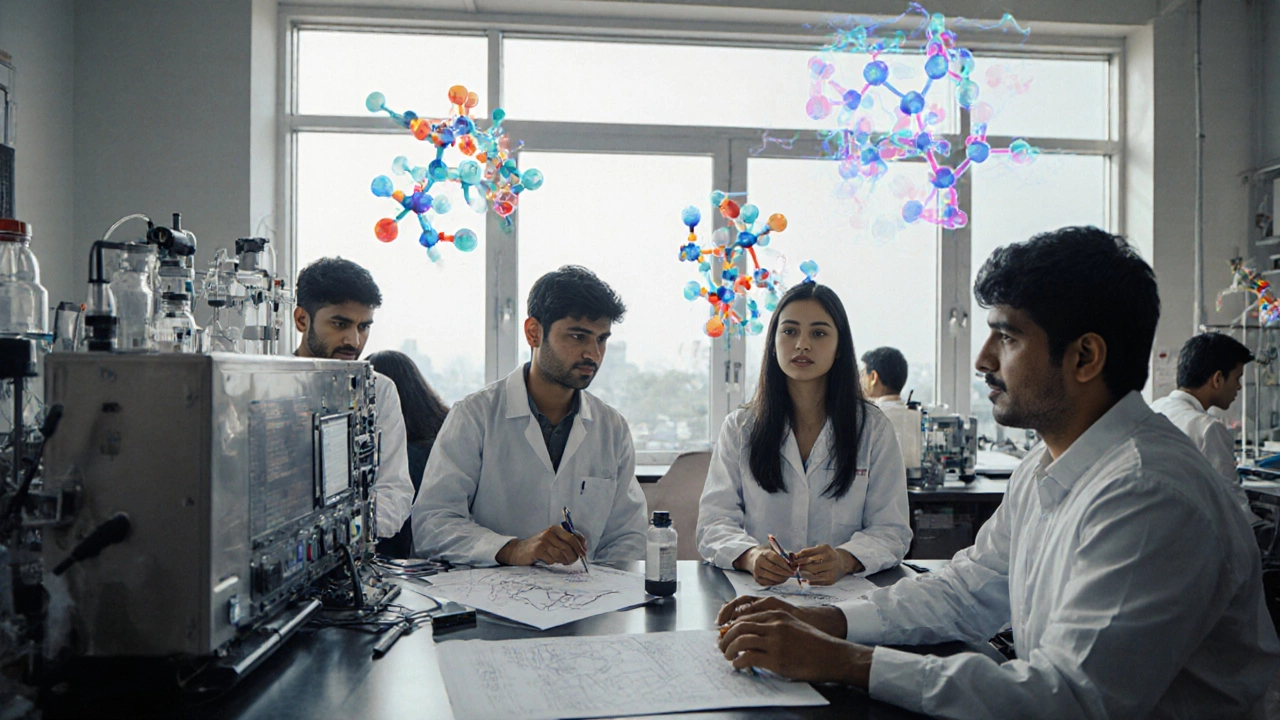
What’s Next? The Road Ahead
By 2030, India could be the world’s third-largest pharmaceutical market by value-behind only the U.S. and China. But that’s not guaranteed. It depends on three things:
- Can India produce high-value drugs like CAR-T cell therapies and mRNA vaccines at scale?
- Will regulators keep improving quality control without slowing innovation?
- Can the industry attract and retain top-tier talent?
If the answer is yes, India won’t just be the pharmacy of the world. It’ll be the innovation engine behind it. If not, China or Southeast Asia will take over low-cost production, and India will be stuck in the middle-too expensive for generics, too inexperienced for biologics.
Final Thought: It’s Not About Quantity Anymore
India made its name by making more pills than anyone else. But the future doesn’t care how many you make. It cares how well you make them. The next wave of growth won’t come from selling 100 million tablets. It’ll come from selling 10 million life-saving biologics-with zero defects, full traceability, and global trust. That’s the real challenge. And if India rises to it, the world will keep depending on its pharmacy. Not because it’s cheap. But because it’s the best.
Is India still the cheapest place to make generic drugs?
Yes, but not by a huge margin anymore. Labor and land costs in India are rising, and countries like Vietnam and Bangladesh are catching up. India’s edge now isn’t just low cost-it’s scale, experience, and regulatory credibility. A generic drug made in India still costs 30-50% less than in the U.S., but the gap is narrowing. What keeps India ahead is its ability to produce complex generics with high quality.
What role does China play in India’s pharma future?
China still supplies over 60% of India’s APIs, but that’s changing fast. The PLI scheme and geopolitical tensions have pushed India to reduce dependence. Many Indian firms are now building API plants to replace Chinese imports. By 2027, India aims to produce 80% of its own APIs. China will remain a supplier for basic chemicals, but India is moving up the chain to make complex, high-margin ingredients itself.
Can Indian companies compete with big pharma like Pfizer or Novartis?
Not yet in branded innovation, but they’re closing the gap. Companies like Biocon and Dr. Reddy’s are now developing biosimilars-copies of expensive biologic drugs-that cost 70% less. These are entering U.S. and EU markets. In 2024, Indian firms launched 15 new biosimilars. That’s more than any other country. They’re not replacing Pfizer, but they’re taking market share in high-value segments. The next step? Co-developing new drugs with global partners.
Are Indian-made drugs safe?
Yes-if they come from plants that pass FDA, EMA, or WHO inspections. In 2024, over 200 Indian facilities were approved for export by the FDA. That’s more than any other country. The problem isn’t safety-it’s consistency. A few bad actors in the past damaged trust. Today, the top 50 Indian pharma companies have near-perfect compliance records. The industry is cleaning up. Buyers now prefer Indian manufacturers because they’re more reliable than ever.
What’s the biggest threat to India’s pharma future?
The biggest threat is complacency. If companies stop investing in R&D, automation, and talent, they’ll be outpaced. China is building massive biotech hubs. The U.S. is reshoring drug production. If India doesn’t move from cost leadership to innovation leadership, it risks becoming a supplier of low-margin products only. The next decade will belong to those who innovate-not just copy.
